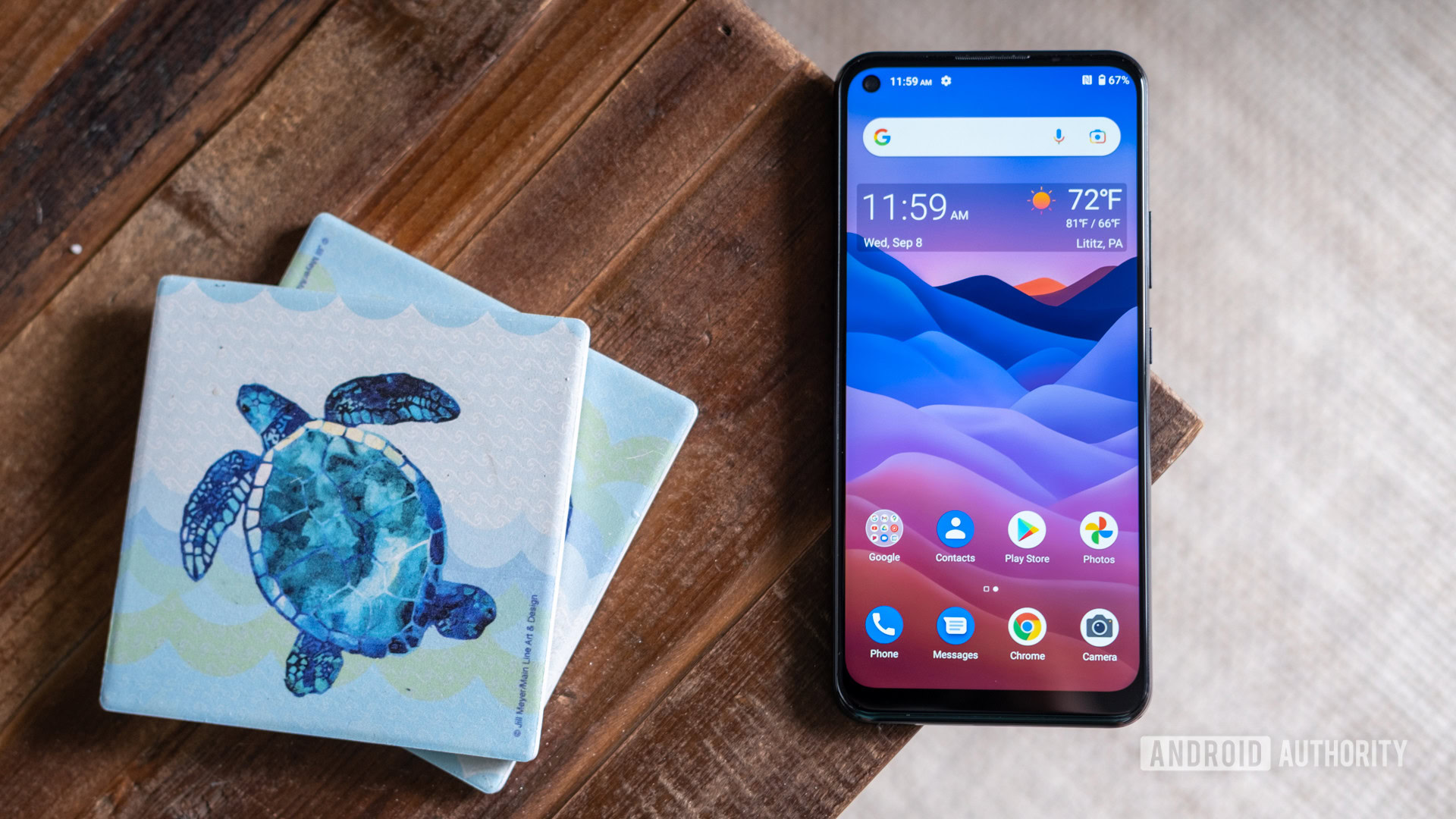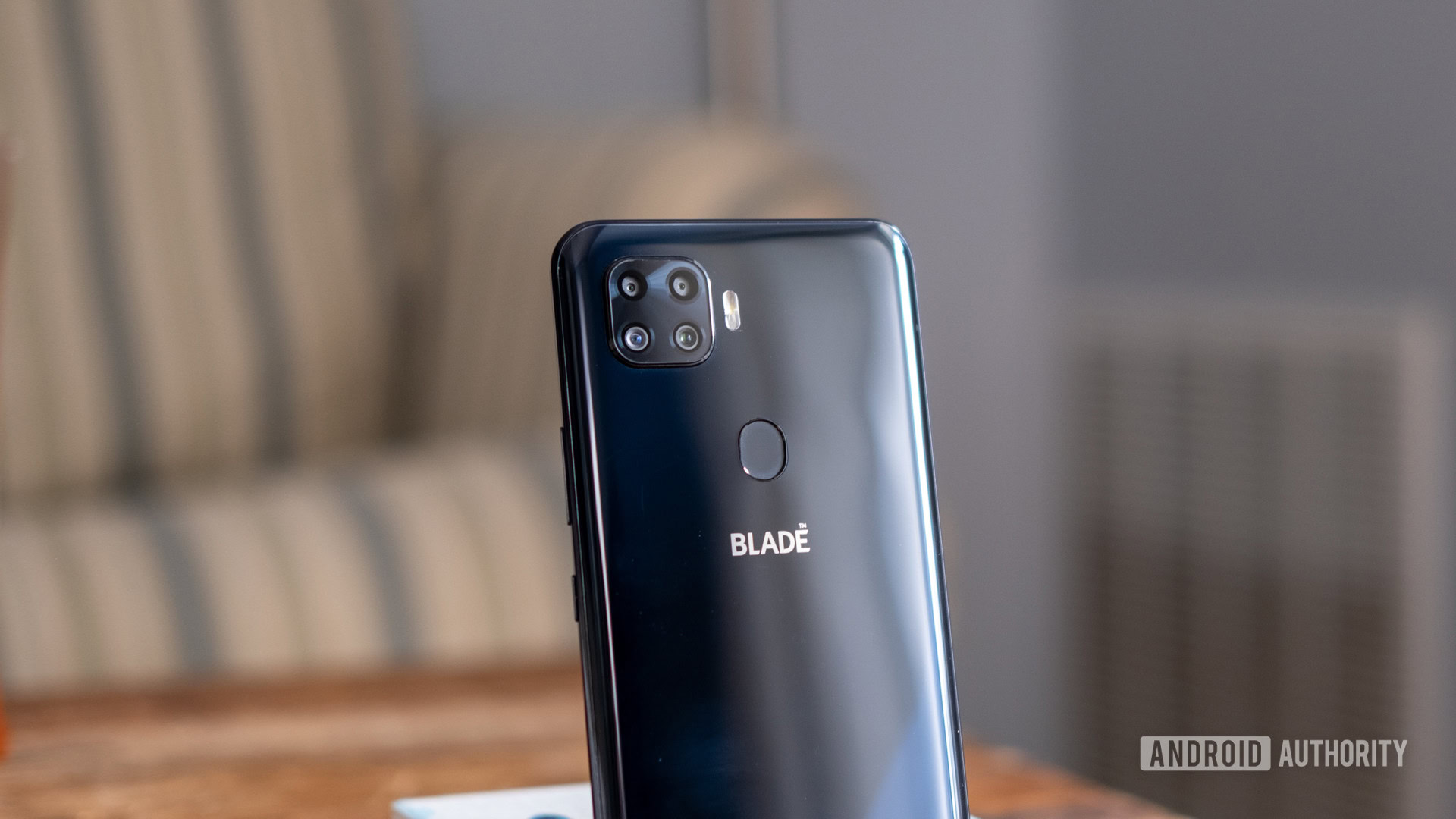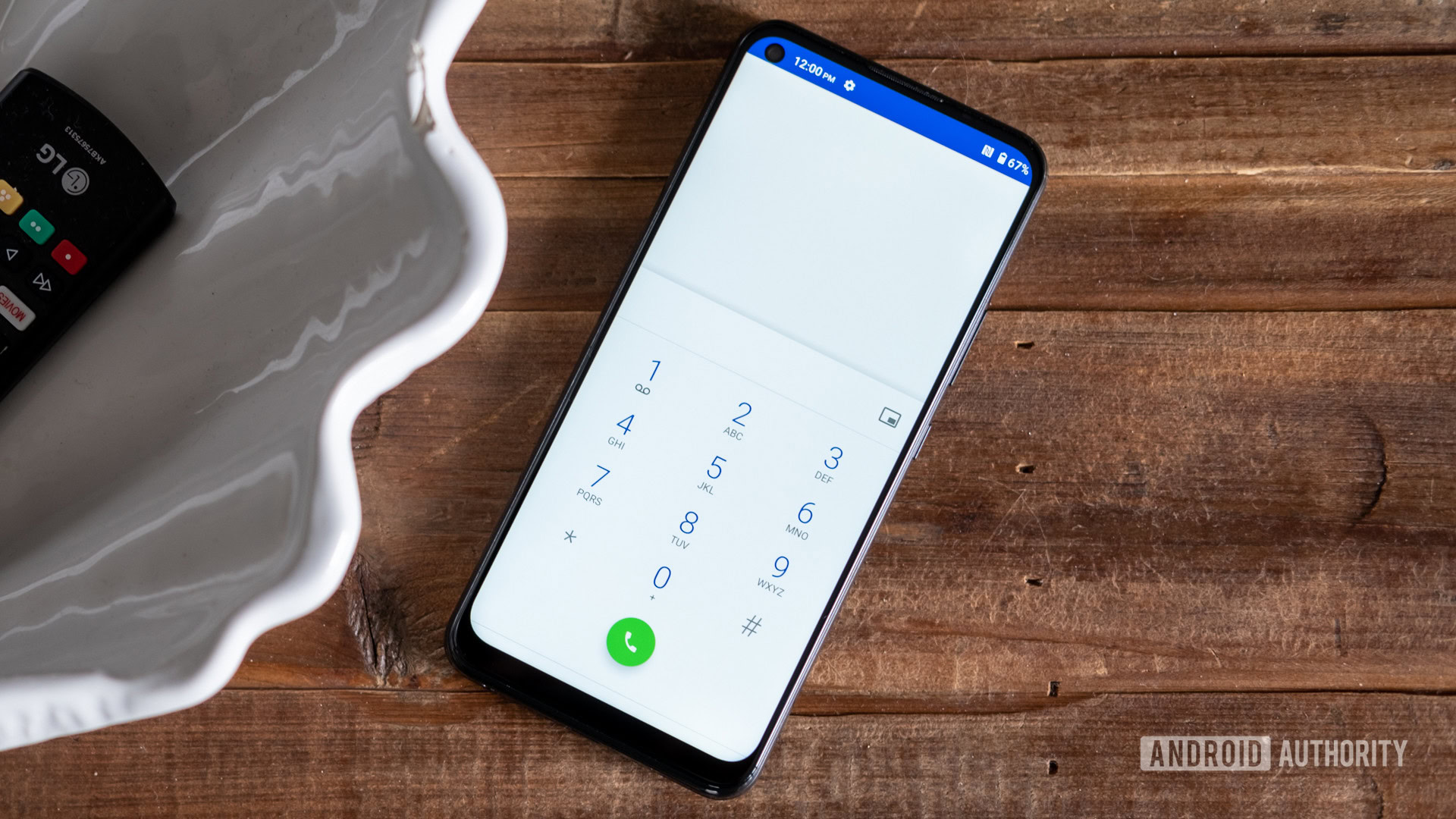Affiliate links on Android Authority may earn us a commission. Learn more.

ZTE Blade X1
MSRP:
What we like
What we don't like
ZTE Blade X1
It’s easy to get drowned out when you go up against mid-range names like the Google Pixel 5a and the Galaxy A52 5G. Yet, ZTE may have found a way to cut through some of the noise with its 5G-ready Blade X1. With four cameras on the back, a headphone jack on the bottom, and a Snapdragon processor at its heart, the perfect price to undercut the competition seems to be the icing on top. But is it the complete package? Find out more in Android Authority‘s ZTE Blade X1 review.
What you need to know about the ZTE Blade X1

- ZTE Blade X1 (6GB/128GB): $384 (Visible exclusive)
The Blade X1 slots right into the center of ZTE’s lineup — not quite up to the Axon 30 family, yet easily the most powerful member of the Blade lineup. It comes in a single configuration with just one color option, but 128GB of expandable storage is plenty for a mid-ranger. The ZTE Blade X1 we tested arrived with Android 10 on board, as well as the October 1, 2020 security patch — an Android 11 update was not available at the time of writing. It’s also restricted as a Visible-exclusive device in the United States, but you can unlock it for use on other networks after 60 days.
ZTE entrusted Qualcomm’s 5G-ready Snapdragon 765G processor with keeping everything running at top speeds, which is the same processor that powered the Google Pixel 5a and OnePlus Nord. It’s paired with 6GB of RAM and a 4,000mAh battery. The large 6.5-inch Full HD+ LCD display with a capped 60Hz refresh rate ties everything together, complete with a punch hole selfie camera in the top left corner.
See also: The best ZTE phones you can buy
The ZTE Blade X1 comes with a USB-A to USB-C charger in the box and a Qualcomm Quick Charge 3 block for good measure. It’s available in a single Dark Blue finish that really shines in the right light.
The ZTE’s mid-ranger fits into a similar price category as the Google Pixel 5a, OnePlus Nord N200, Samsung Galaxy A52 5G, and even the iPhone SE. Though the Blade’s rivals may hold an edge in certain specs, it manages to undercut the Pixel and the iPhone in terms of pricing at just $384.
What’s good?

Budget phones can be a mess for Android skins and pre-installed bloatware, but the ZTE Blade X1 is a breath of fresh air. The device is fast and smooth straight out of the box, with no extra apps of any kind. In fact, the simplicity feels almost like using a Pixel device. Even the AccuWeather-powered weather app — the one non-Google addition — doesn’t look out of place.
The Blade X1’s 6.5-inch display is the perfect size for everything from streaming to gaming. The punch hole camera is small enough to be easy to ignore, and the Full HD+ resolution is crisp enough considering the price. Filling out the media experience is a mono down-firing speaker that’s more than loud enough to blast your favorite songs. It does fall victim to some distortion as you get louder, but it’s better than many mono speakers at the price. However, you’ll need to plug in a pair of wired headphones via the very welcome 3.5mm headphone jack to take advantage of the FM Radio app.
ZTE's Android skin is nearly perfect — there are no ads or bloatware to be found.
Even the shape of the Blade X1 is just right for long-term usage. It’s slightly wider at the back, with a gentle taper towards the screen. You’ll also notice a shallow dent at the top and bottom, which is just about perfect for resting your thumbs.
As far as security options go, ZTE is happy to let you choose. The Blade X1 offers a rear-mounted fingerprint scanner or face unlock, though the latter relies on software so will be less secure.
Check out: The best budget camera phones you can buy
Some OEMs cut major corners regarding budget-friendly camera options, but not the ZTE Blade X1. Its primary 48MP sensor is sharp and works well in decent-to-great lighting. The camera app is straightforward to navigate, too. ZTE’s peripheral camera modes aren’t quite as impressive, but the ultra-wide shooter can lead to some fun results. You can even tap into several portrait effects and try a monochrome mode with red, green, or blue color-saving options. ZTE’s Bokeh mode, also lets you choose your level of background blur (f/1.0 up to f/8.0) for customizable portrait shots.
I also found the battery life to be more than enough for a full day of use, and I often got close to two days on a single charge. The 4,000mAh cell isn’t massive for a 5G-ready device, but I didn’t notice any passive drain. Of course, 18W charging helped get me back on my feet any time the Blade X1 hit zero, jumping to 45% in 30 minutes and picking up a full charge in about 80 minutes.
What’s not so good?

Android 11 has been out for a year now, having launched in September 2020. Yet the ZTE Blade X1 launched with Android 10 on board in January 2021 and has stayed there. It hasn’t had so much as an Android security patch beyond October 1, 2020, which is just not acceptable at this point. Especially considering rivals devices from Samsung, Google, and Apple offer comprehensive long-term support even on mid-range smartphones.
We reached out to ZTE about the software concerns and were told that the second security update rolled out in September. However, the Blade X1 we tested has yet to receive the update, we were also informed that support is slated to continue for two years from the launch date, though no guarantees were given regarding platform upgrades.
The lack of Android 11 is only the start of the Blade X1's update issues.
Mentioning advantages from rival devices, the LCD display and lack of a defined refresh rate come up short. It’s not too hard to find an OLED panel in this price bracket — take the Pixel 5a or Galaxy A52 5G, for example. Additionally, both the OnePlus Nord N200 and the Galaxy A52 5G offer 90Hz and 120Hz panels, respectively, but you’re stuck at 60Hz here. ZTE also skipped any form of Gorilla Glass, so it may be worth investing in a screen protector as well.
I’m also not entirely sold on the Blade X1’s glossy plastic construction. The Dark Blue finish looks great in the right lighting, but only if you manage to keep the phone free of fingerprints. However, it’s nearly impossible to do so, and it just doesn’t look the same covered in smudges. You could always add a clear case on top, but it’s tough to add too much more bulk without making it feel a little unwieldy. ZTE also skipped an IP rating on the Blade X1, a feature that has slowly been making its way into the affordable realm. While not common historically, it would have been nice to see some basic water resistance on a near-$400 device.
The Blade X1’s Snapdragon 765G processor was an impressive jump for mid-range silicon back in 2020. However, it’s not the fastest or most powerful option out there these days. It’s still serviceable and will be fine for everyday tasks and light gaming, but it may start to show its age in a year or so.
Although the Blade X1 has a solid set of cameras, you’ll probably only use the regular and ultra-wide cameras with any regularity. The 2MP macro camera isn’t sharp enough for much more than to show off occasionally, even if it produces acceptable results in good lighting.
I also noticed that the Blade X1 has trouble with portraits on occasion, especially with identifying edges. You can choose from some interesting effects like Studio Light and Window Blinds, but they tend to highlight the areas where the camera comes up short.
Unfortunately, as I was testing the phone the Blade X1’s cameras simply stopped working at one point. I could no longer flip between the selfie and main cameras, and there were no software updates to save me from my struggles. In the end, I ended up falling back on the old factory reset, which brought the camera back to life.
ZTE Blade X1 camera samples
ZTE Blade X1 specs
| ZTE Blade X1 | |
|---|---|
Display | 6.5 inches IPS LCD 1,080 x 2,340 (19.5:9) |
Processor | Qualcomm Snapdragon 765G No mmWave |
RAM | 6GB |
Storage | 128GB Expandable to 2TB |
Cameras | Rear quad camera: 48MP wide (f/1.8) 8MP ultrawide (f/2.2) 2MP macro (f/2.4) 2MP depth (f/2.4) Front: 16MP wide (f/2.0) |
Battery | 4,000mAh 18W fast charging Qualcomm Quick Charge 3.0 |
IP Rating | None |
Software | Shipped with Android 10 |
Dimensions | 6.46 x 2.99 x 0.36 inches (164 x 76 x 9.2mm) 6.70 oz (190 g) |
Colors | Dark Blue |
Security | Rear-mounted fingerprint scanner Face unlock |
Headphone Jack | Yes |
ZTE Blade X1 review: Should I buy it?

If you’re on a budget and itching to try Verizon’s Visible service, this is the way to do it. However, there’s no good way to get your hands on a ZTE Blade X1 with any other carrier in the US. That’s a shame because the ZTE Blade X1 is more than competitive when it comes to the camera, processor, and RAM with many phones in its price tier.
Where the Blade X1 comes up well short is the software. It’s not good enough to have a device running on an outdated security patch for more than a year and the lack of a long-term promise for platform upgrades is far behind rivals from Samsung and Google.
See also: The best budget phones you can buy
We’ve already mentioned the closest alternatives to the Blade X1 in the Pixel 5a ($449), Galaxy A52 5G ($499), and OnePlus Nord N200 ($239). The former two hold more value and power for your money, while the Nord N200 is a cheaper entry into 5G, albeit with a similarly questionable software situation.
